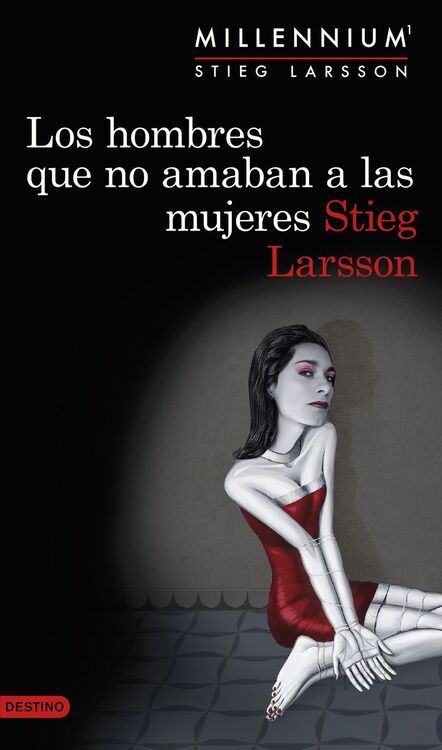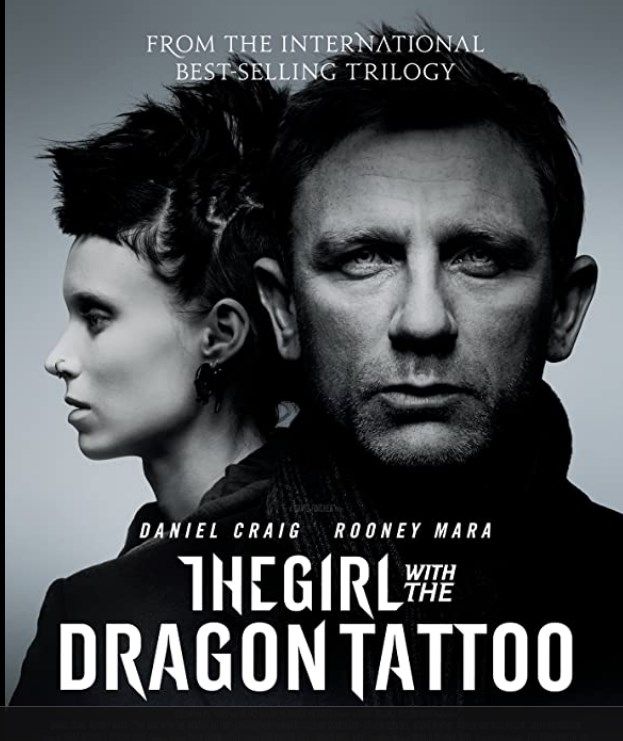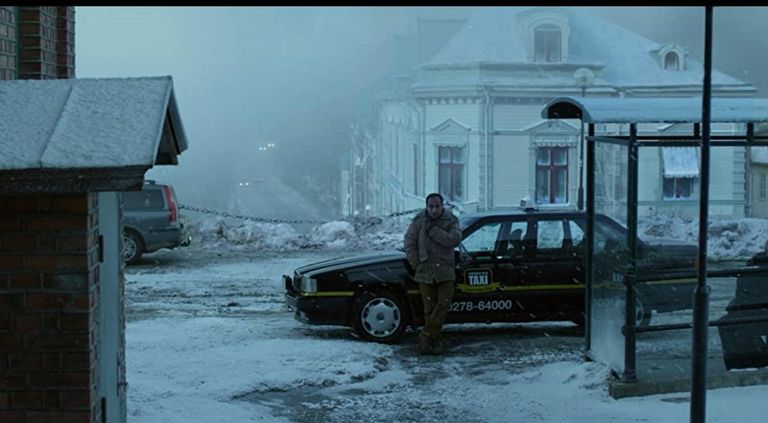
Si hubiera seguido un orden cronológico es evidente que la novela de la cuál les voy a hablar hoy tendría que ser la primera en ser publicada. Porque fue la primera de la saga Millenium del escritor sueco Stieg Larsson.
Sin embargo, como voy agarrando los libros que he leìdo de la biblioteca personal que tengo en casa, no siempre ese orden tiene un sentido cronológico, sino más bien tiene un sentido de lectura, del momento en el cuál lo he leído o, en muchos casos, re-leìdo -en algunos casos por segunda o tercera vez-
Comencè a publicar esta serie de reseñas con el primer libro de David Lagercrantz que continuó la saga Millenium de Larsson.
Hoy vuelvo al inicio con el primer libro de Larsson: Los hombres que no amaban a las mujeres.
Stieg Larsson falleció inesperada y trágicamente de un ataque al corazón, días después de entregar a su editor el tercer volumen de la serie Millennium y poco antes de ver publicado el primero. Toda una ironía del destino. Morir sin ver el éxito descomunal de su obra.

If I had followed a chronological order, it is evident that the novel I am going to talk about today would have to be the first to be published. Because it was the first of the Millennium saga by the Swedish writer Stieg Larsson.
However, as I am taking the books I have read from my personal library at home, this order does not always have a chronological sense, but rather a sense of reading, of the moment in which I have read it or, in many cases, re-read it -in some cases for the second or third time-.
I started publishing this series of reviews with the first book by David Lagercrantz that continued Larsson's Millennium saga.
Today I return to the beginning with Larsson's first book, The Men Who Didn't Love Women.
Stieg Larsson died unexpectedly and tragically of a heart attack, days after delivering the third volume of the Millennium series to his publisher and shortly before seeing the first volume published. Quite an irony of fate. To die without seeing the enormous success of his work.

Todo comienza con la desaparición en una isla de Suecia, de difícil acceso al continente, de una de las herederas de uno de los más poderosos industriales suecos.
Estamos hablando de Harriet Vanger quien hace treinta y seis años desapareció improvisamente de la isla sin dejar huellas, dejando detrás de si una estela de misterios y conjeturas sin que ninguna haya podido ser corroborada hasta la actualidad.
Secuestrada? Escapada? Asesinada? El caso ha sido definitivamente cerrado por falta de pruebas y nadie quiere hablar más del hecho. Los detalles han caído en el olvido.
Sin embargo su tío, en los últimos años de vida, se ha fijado un objetivo: resolver el misterio que lo obsesiona, porque sabe, intuye, que su sobrina está viva.
Todos los fines de año llega a un estudio un paquete sin remitente con una flor seca enmarcada. Desde hace cuarenta y tres años. Las primera siete les fueron regaladas por Harriet. Las restantes corresponden a cada año desde que desapareció su sobrina.
Asì, de a poco, en un libro muy voluminoso -característica que se extiende a los dos restantes de la saga- Larsson comienza a entretejer los sutiles hilos de la trama.
Y de a poco comienzan a emerger losa principales actores de la historia: el periodista Mikael Blomkvist y Lisbeth Salander, una muy particular investigadora privada, socialmente inadaptada, tatuada y llena de piercings, pero sobre todo y esto la hace muy especial con extraordinarias e insólitas cualidades informáticas.
En otras palabras una de las más renombradas hackers en el particular mundo de Internet.
Blomkvist después de algunas dudas iniciales (èl no es un detective sino un periodista de los llamados "de denuncia") acepta el encargo de Vanger de retomar desde el inicio la búsqueda de su sobrina.
Para ello le paga un año entero de sueldo con la condición de que se dedique absolutamente a la búsqueda y deje, por el momento, su trabajo en la revista Millenium.
Blomkvist lo acepta. Más que por el dinero en si mismo, por el desafío que implica.
Al final de cuentas siempre ha sido un eriodista de investigación y alma de la revista Millennium, cuyo principal objetivo ha sido siempre el de sacar a la luz los trapos sucios de la política y las finanzas suecas.
La novela es más que nada una crónica de conflictos familiares hasta degenerar en el crimen y el castigo, entre perversiones sexuales y fraudes financieros en el mundo de las altas finanzas, con una trama violenta y amanazadora que logra atrapar hasta el último instante.

It all begins with the disappearance of one of the heiresses of one of the most powerful Swedish industrialists on an island in Sweden, difficult to reach from the mainland.
We are talking about Harriet Vanger, who thirty-six years ago suddenly disappeared from the island without a trace, leaving behind a trail of mysteries and conjectures, none of which have been corroborated to date.
Kidnapped? Escaped? Murdered? The case has been definitively closed for lack of evidence and no one wants to talk about it anymore. The details have been forgotten.
However, her uncle, in the last years of his life, has set himself a goal: to solve the mystery that obsesses him, because he knows, he intuits, that his niece is alive.
Every end of the year, a package arrives at a studio with no return address and a framed dried flower. For forty-three years. The first seven were given to them by Harriet. The remaining ones correspond to each year since her niece disappeared.
Thus, little by little, in a very voluminous book -a characteristic that extends to the other two books of the saga- Larsson begins to weave the subtle threads of the plot.
And little by little the main actors of the story begin to emerge: the journalist Mikael Blomkvist and Lisbeth Salander, a very particular private investigator, socially maladjusted, tattooed and full of piercings, but above all and this makes her very special with extraordinary and unusual computer qualities.
In other words one of the most renowned hackers in the particular world of the Internet.
Blomkvist after some initial hesitation (he is not a detective but a journalist of the so-called "whistleblower") accepts Vanger's request to resume the search for his niece from the beginning.
He pays him a full year's salary on the condition that he devotes himself entirely to the search and leaves his job at Millenium magazine for the time being.
Blomkvist accepts. More than for the money itself, for the challenge.
After all, he has always been an investigative journalist and the heart and soul of Millennium magazine, whose main objective has always been to expose the dirty laundry of Swedish politics and finance.
The novel is more than anything else a chronicle of family conflicts until they degenerate into crime and punishment, between sexual perversions and financial fraud in the world of high finance, with a violent and threatening plot that manages to catch until the last moment.
MI OPINION /MY OPINION
La novela es atrapante desde el principio con una protagonista fuera de lo común.
La historia se desarrolla de manera interesante y te deja ansioso de continuar con el resto de la saga.
Recuerdo que cuando leí la novela de Stieg Larsson Los hombres que no amaban a las mujeres hace ya bastante tiempo el tema de la violencia de género, eje principal de la novela, comenzaba a hacerse sentir en Internet y redes sociales, además de los restantes medios de comunicación.
Pero lo que me llamó más la atención fue cómo la violencia machista más brutal cruzaba todo el relato.
Y también noté, y esto es una impresión absolutamente personal, que había dos errores, repito desde mi punto de vista.
El primero estaba en el título. No se trata de que “no amaban” sino que “odiaban”. Tal vez sea un problema de la traducción en español. La edición italiana por ejemplo es **Uomini que odiano le donne. ** (Hombres que odian a las mujeres, directamente).
El segundo punto que podría haberse mejorado en la trama es que Larsson necesita justificar (tal vez por su pasado como experto conocedor de organizaciones de extrema derecha y neonazistas y fundador de la revista literaria antirazista Expo) el asesinato de mujeres y crea un argumento de nazis contra judíos.
Y particularmente creo que no era necesario. Los hechos de crónica actuales en todo el mundo han demostrado que a las mujeres se las viola y se las mata porque se puede, porque en las sociedades sigue imperando un concepto machista de la autoridad, al cual muchas veces no se le presta la debida atención.

The novel is gripping from the beginning with an out-of-the-ordinary protagonist.
The story unfolds in an interesting way and leaves you eager to continue with the rest of the saga.
I remember that when I read Stieg Larsson's novel The Men Who Didn't Love Women quite some time ago, the theme of gender violence, the main axis of the novel, was beginning to make itself felt on the Internet and social networks, as well as in the rest of the media.
But what caught my attention the most was how the most brutal macho violence crossed the whole story.
And I also noticed, and this is an absolutely personal impression, that there were two mistakes, I repeat from my point of view.
The first was in the title. It is not "they did not love" but "they hated". Maybe it is a problem of the Spanish translation. The Italian edition for example is Uomini que odiano le donne. (Men who hate women, directly).
The second point that could have been improved in the plot is that Larsson needs to justify (perhaps because of his past as an expert connoisseur of extreme right-wing and neo-Nazi organizations and founder of the anti-Razi literary magazine Expo) the murder of women and creates a Nazis vs. Jews plot.
And I particularly believe that it was not necessary. The current chronicle events around the world have shown that women are raped and killed because they can, because in societies still prevails a macho concept of authority, which often is not given due attention.
SOBRE EL AUTOR / ABOUT THE AUTHOR
Stieg Larsson alcanzó la fama "post-morten" con la publicación de la trilogía de novelas policíacas llamada Millennium (es el nombre de la revista en la cuál trabaja el protagonista principal), formada por Los hombres que no amaban a las mujeres, La chica que soñaba con una cerilla y un bidón de gasolina y La reina en el palacio de las corrientes de aire.
Títulos tan largos como su contenido. Y sin embargo atrapandes todos del inicio al final.
En el año 2008 cuando se publicó la edición en español fue el segundo autor más vendido en el mundo solo detrás del afghano Khaled Hosseini.
En la actualidad la saga y la trilogía Millenium (después seguida por otros tres libros escritos por David Lagercrantz), es un verdadero caso de betseller mundial, ha vendido más de 30 millones de libros en más de 40 países.

Stieg Larsson achieved "post-morten" fame with the publication of the trilogy of detective novels called Millennium (the name of the magazine in which the main protagonist works), consisting of The Men Who Didn't Love Women, The Girl Who Dreamed of a Match and a Gas Can and The Queen in the Draughty Palace.
Titles as long as their content. And yet they are all catching from start to finish.
In 2008, when the Spanish edition was published, he was the second best-selling author in the world behind only the Afghan Khaled Hosseini.
Today the Millennium saga and trilogy (later followed by three other books written by David Lagercrantz), is a true case of worldwide bestseller, has sold more than 30 million books in over 40 countries.
Posteo cruzado / Crossposting.

Sources consulted (my property) for the preparation of this article. Some paragraphs may be reproduced textually.
Fuentes consultadas (de mi propiedad) para la elaboración del presente artículo. Algunos párrafos pueden estar reproducidos textualmente.
| Argentina Discovery. |  |
|---|---|
| Galería Fotográfica de Argentina. |  |
| Viaggio in Argentina. |  |
| Un Libro de Cabecera. |  |
Re🤬eD
🥓
Thanks!!
Super! Ya me atrapó tu reseña. Me encantaría leerlo. Me pregunto si en Internet estará on line en algún sitio, ya que desde Cuba comprarlo por Amazon se me hace una misión imposible. Indagaré!
Gracias y un saludo cordial.
No sé si hago bien en decirlo, pero si tienes una computadora puedes instalar el mítico eMule en Windows o aMule en Linux y desde ahí te descargas todos los libros que quieres. Algún defensor del derecho de propiedad seguramente me va a criticar. Hay otros programas P2P que pueden consultar en Internet.
Saludos y gracias por comentar @lienladysweet.
Maravilloso, no tenía idea. Lo intentaré.
Shh, nadie lo sabrá; secreto de paz 😉😅😅(la palabra guerra ni en chiste)
Gracias mil. Un saludo cordial 🇨🇺.
Congratulations! 🏆
You have recieved a coconutty upvote! 🥥
Thank you for contributing to the Blurt Blockchain!
Keep up the great work!
Curated by @outofthematrix!
A little reminder: I am a top 20 Blurt witness, sooo please help me stay there!
Please consider taking a moment to vote for my witness, if you haven't already done so!
You can do this by logging into your wallet with your active key! 🗳️
It only takes a few seconds and doesn't cost a cent!
https://blurtwallet.com/~witnesses?highlight=outofthematrix
Thank you for supporting and voting for my content @curationcoconut.
Hi @argenvista, great news! Your content was selected by curators @oneray, @ten-years-before to receive a special curation from BeBlurt 🎉 Don't hesitate to upvote this comment as the curators will receive 80% of the rewards for their involvement.
You can support us by voting for our witness, our decentralized funding proposal, or through delegation. You're also welcome to join our Discord server 👉 https://discord.beblurt.com
Thank you for supporting and voting for my content @beblurt.